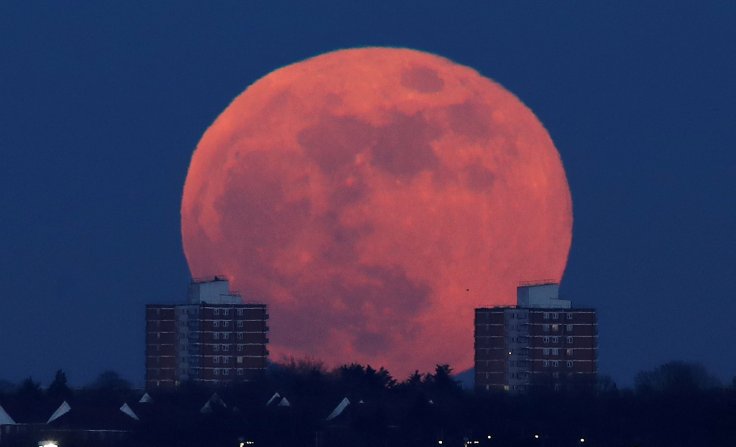No matter where you are in the world earth's only natural satellite is always there to inspire poets, meteorologists and scientists. As the days become longer than nights in the northern hemisphere, it getting harder to spot some stars in the sky. However, the Moon is always visible and every few months it gives us a special sighting. Tonight, a rare sight of the moon will be visible in the sky. It's the super pink moon that will rise tonight a few minutes before sunset. It will reach full phase at 11:31 PM.
The moon might even look a bit bigger than its actual size as it rises, but its color will be the same. But, the "pink" label for the full moon this month comes from phlox, pink flowers that bloom around this time of year. Tonight's full moon is called "super" because it reaches perigee, which means the point in the orbit of the moon will be closest to the earth on Tuesday at 11:22 AM. This makes tonight's full moon a "super moon." Other than tonight, full moons in May and June 2021 had also earned the "super" label.
Why a Moon looks bigger than it's actual size?
The Moon doesn't actually look much bigger than a normal full Moon in the sky. It sometimes tend to look bigger when it's closer to the horizon. But Why? When the size of the Moon in the sky doesn't change very much when it orbits closer to the Earth? This is because of the Moon illusion.

Upcoming Full Moons in 2021
April 26 -- Super Moon, Pink moon
May 26 -- Super Moon, Flower moon
June 24 -- Super Moon (according to some), Strawberry moon
July 23 -- Buck moon
August 22 -- Sturgeon moon
September 20 -- Harvest moon, technically the full moon closest to the equinox
October 20 -- Hunter's moon
November 19 -- Beaver moon
December 18 -- Cold moon
Different Phases of the Moon
The Moon is at different points around the Earth during its orbit relative to the Sun which is the reason we see different proportions of the Moon illuminated at different times of the month, or in different phases. When the Moon, the Earth and the Sun align together with the Earth between the Sun and the Moon, the sunlight falls on the whole lunar surface making it shine and it reflects back to Earth. On Earth, this is called a full Moon. But when the Moon is between the Earth and the Sun, sunlight cannot reflect off its surface, which is called a New Moon.









